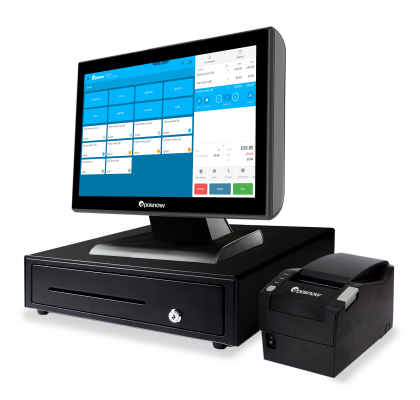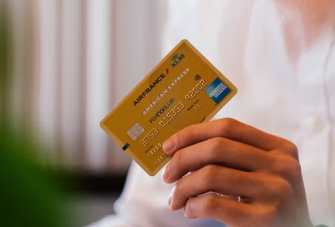How to Analyse Your Store's Foot Traffic
When it comes to your retail business, having a clear overview of all aspects is crucial to understanding what's working and what isn't. And while there are a number of different ways to analyse your business, one key metric you can't afford to ignore is your store's foot traffic.
But what exactly is foot traffic, and why should you care?
Simply put, foot traffic refers to the number of people who enter your store within a given period of time. And while it might seem like a relatively straightforward concept, understanding and analysing your foot traffic can give you some invaluable insights into your business.
Not quite sure where to start? Don't worry. We've got you covered. We're giving you the 411 on everything you need to know about foot traffic, from how to measure it to what you can do with the data, so you can make the most out of this key metric and take your business to the next level.
What is foot traffic?
As we mentioned earlier, foot traffic refers to the number of people who enter your store within a given time. But it's not just about counting how many people come in. It's also about understanding why they came in and what they did while they were there.
Let's say you own a clothing store. On any given day, you might have people coming in to browse, try on clothes, buy something they saw online, or just window shop. And while each person's reason for coming in is different, they all contribute to your store's foot traffic.
For an integrated EPOS solution that will take care of in-store and online sales, try Epos Now's specialised retail system:
- Integrate multiple sales platforms and manage them through one place
- Manage stock and product data quickly and easily
- Know your business with hundreds of modifiable, detailed, downloadable reports
- Be supported all the way with an expert team on hand 24/7

How to measure foot traffic
There are several different ways to measure your store's foot traffic. In this article, we're going to share our top three methods:
Use a cloud-based Epos system
If you're already using a cloud-based Epos system, like our all-in-one solution, you can easily track and analyse your store's foot traffic. With our built-in reports and dashboards, you can see how many people are coming in, when they're coming in, and what they're doing while they're there. Plus, our Epos system also integrates with other popular business tools, like Google Analytics, so you can get even more insights into your foot traffic.
Use a physical counting device
If you don't have a cloud-based Epos system, you can use a physical counting device, like a turnstile or clicker counter, to track your store's foot traffic. These devices are relatively inexpensive and easy to set up, making them a great option for small businesses. However, one downside is that they only give you a limited view of your foot traffic. For example, you won't be able to see how long people are spending in your store or what they're doing while they're there.
Use a camera-based system
If you want a more comprehensive view of your store's foot traffic, you can use a camera-based system. These systems use video footage to track people as they move around your store.
While they're more expensive than other options, they offer a number of benefits, like the ability to see how long people are spending in each area of your store and what they're doing while they're there. However, unlike an Epos system, they won't be able to track sales data.
How can foot traffic data help your retail business?
Now that you know how to measure your store's foot traffic, it's time to understand what metrics you should be tracking and how this data can be used to improve your business. Remember, foot traffic data is meaningless if you're not using it to make your retail business better. Here are five key metrics you should be tracking:
Conversion rates
Put simply, your store's conversion rate is the percentage of people who purchase out of the total number of people who enter your store. For example, if 100 people come into your store and 10 make a purchase, your store's conversion rate would be 10%.
The average conversion rate for brick-and-mortar stores is around 20-40% [1]. So, if your store's conversion rate is below this benchmark, it's a good idea to look closely at your foot traffic data to see where the problem lies.
Some things to consider if you have a low conversion rate are:
- Are people coming into your store and leaving without talking to anyone?
- Do you have a clear call to action at the point of sale?
- Is your pricing competitive?
- Do you offer discounts or promotions?
A/B testing is also a great way to improve your conversion rate. For example, let's say you want to test two different pricing strategies. You can use your foot traffic data to see which strategy is more effective in getting people to make a purchase.
Overstaffing or Understaffing
Your store's foot traffic data can also be used to help you manage your staffing levels. For example, if you see a spike in foot traffic during certain times of the day or week, you may need to staff up to ensure that your customers are being taken care of. On the other hand, if you're consistently seeing low foot traffic, you may be able to cut back on staff hours.
Imagine your customers walk into your store during their lunch break, and there's only one sales associate on the floor. The line for the fitting room is long, and a stack of clothes is waiting to be put away. The customer is likely to leave without making a purchase.
Now, imagine the same scenario, but this time there are two sales associates on the floor, and the line for the fitting room is short. The store is clean and organised. The customer is much more likely to have a positive experience and make a purchase.
Tracking your store's foot traffic data can help you avoid these kinds of situations by ensuring that you have the right number of staff working at the right times.
Maintenance and Product Flow
With foot traffic data, you can also track how often people visit different areas of your store. For example, if you see that people are avoiding a certain section, it could be because the area is in disrepair or the products are out of stock. Let's say your store uses interactive demos to show customers how to use your products. If the demo area is in disrepair, people are likely to avoid it. However, if the demo area is well-maintained, people are more likely to use it and make a purchase.
Understanding which store areas are being visited most often can help you optimise your product flow. For example, if you see that people are visiting the clearance section more often than other sections, you may want to consider moving clearance items to a more visible location.
Customer Retention
Your store's foot traffic data can also be used to track customer retention. Customer retention is the percentage of customers who return to your store after making their first purchase. For example, if 100 people make a purchase at your store and 90 of them come back within a year, your customer retention rate would be 90%.
Ideally, you want your customer retention rate to be as high as possible. Why? Because studies show that the average, loyal customer spends 67% more in their 31st to 36th month with a brand than in their first six months of the relationship [2]. In other words, customer retention is essential for long-term success.
Final Thoughts
So there you have it. These are just a few ways to use your store's foot traffic data to improve your business. You can make informed decisions about everything from pricing and promotions to staffing and product flow by tracking and analysing your foot traffic. And when it comes to customer retention, tracking how often people are returning to your store is essential.
Curious about how you can use Epos Now's reporting functions in your store? Submit your information and a member of our team will reach out to answer your questions.




